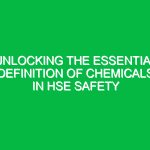Introduction
Hello, team! Today, we are gathering for a toolbox talk focused on a critical health issue that can affect anyone at any time—strokes. Understanding the signs of a stroke and how to respond effectively can save lives. In our work Environment, where quick thinking and action are paramount, being informed about stroke signs and the proper emergency response is not just beneficial; it’s essential.
What is a Stroke?
A stroke occurs when the blood supply to a part of the brain is interrupted or reduced, preventing brain tissue from getting oxygen and nutrients. This can lead to brain damage and long-term disabilities. There are two main types of strokes: ischemic strokes, caused by blockages, and hemorrhagic strokes, caused by bleeding. Recognizing the signs of a stroke and acting quickly can significantly improve outcomes.
Why Recognizing Stroke Signs is Vital
Strokes can happen without warning, and time is of the essence. The longer a stroke goes untreated, the greater the damage to the brain. According to the CDC, nearly 795,000 people in the United States experience a stroke each year, with about 185,000 of those being recurrent strokes. Knowing the stroke signs and having a solid emergency response plan can make all the difference.
Common Stroke Signs to Recognize
When it comes to identifying a stroke, remember the acronym FAST:
- F – Face Drooping: Ask the person to smile. Does one side of their face droop or feel numb?
- A – Arm Weakness: Ask the person to raise both arms. Does one arm drift downward or feel weak?
- S – Speech Difficulty: Ask the person to repeat a simple phrase. Is their speech slurred or strange?
- T – Time to Call Emergency Services: If you observe any of these signs, call 911 immediately.
These signs can occur suddenly, and not everyone will display all symptoms. Being aware of stroke signs can empower you to act swiftly.
Additional Symptoms to Watch For
Besides the FAST signs, other symptoms can include:
- Sudden confusion or trouble understanding speech.
- Sudden trouble seeing in one or both eyes.
- Sudden trouble walking, dizziness, or loss of balance.
If you notice any of these symptoms in a coworker or even yourself, it’s crucial to act quickly. Strokes can affect people of all ages, so never assume someone is too young to be having a stroke.
Emergency Response Steps
In the event you suspect someone is having a stroke, follow these emergency response steps:
- Assess the Situation: Ensure the area is safe to approach.
- Use the FAST Method: Check for symptoms as previously discussed.
- Call for Help: Dial 911 or your local emergency number. Provide clear information about the situation.
- Keep the Person Calm: Reassure them and keep them as comfortable as possible while waiting for emergency services.
- Do Not Give Them Food or Drink: Avoid giving anything to eat or drink, as swallowing may be impaired.
These steps can help in ensuring the Safety of the person affected until professional help arrives.
Real-Life Scenario: Responding to a Stroke
Let’s consider a hypothetical scenario. Imagine you are working on a project with a colleague. Suddenly, you notice they start speaking incoherently and their face appears droopy. Remembering the FAST method, you quickly assess the situation. You confirm they cannot raise one arm and appear confused. You immediately call 911, provide them with all the necessary details, and stay with your colleague, reassuring them until help arrives. Your quick actions could save their life.
Importance of Training and Preparedness
In our workplace, regular training on recognizing stroke signs and practicing emergency response can greatly enhance our collective Safety. Companies that prioritize health and safety training empower their employees to act during emergencies, leading to better health outcomes and potentially saving lives.
Consider participating in first aid and CPR training. Knowing how to respond can make a difference. Encourage your coworkers to learn and stay updated on health and safety protocols. This is not just about compliance; it’s about caring for one another.
Potential Hazards and Risks
Understanding the risks related to strokes is also essential. High blood pressure, diabetes, smoking, and high cholesterol are significant risk factors. In our work environment, stress and poor lifestyle choices can contribute to these risks. By creating a culture that promotes health and wellness, we can mitigate these risks and support each other in leading healthier lives.
Regulations and Company Policies
There are Regulations and Standards in place regarding Workplace Health and safety, including those related to first aid and emergency response. Familiarize yourself with our company policies regarding health emergencies. Compliance with these standards is not only a legal obligation but also a moral one. It shows that our company values the well-being of its employees.
Discussion and Engagement
Now that we’ve covered the signs of strokes and the appropriate emergency response, let’s open the floor for discussion. Do you have any experiences you’d like to share? Have you ever had to respond to a medical emergency at work? What did you learn from that experience? Engaging in these conversations can help reinforce what we’ve learned today.
Conclusion
In conclusion, recognizing stroke signs and implementing an effective emergency response is crucial for maintaining safety in our workplace. Remember the FAST acronym and the steps to take if you suspect someone is having a stroke. Your awareness and preparedness can make a significant difference in an emergency situation.
Thank you for your attention today and for your commitment to creating a safe working environment. Stay vigilant, support each other, and let’s ensure we are all prepared to respond effectively to any health emergencies that may arise.


